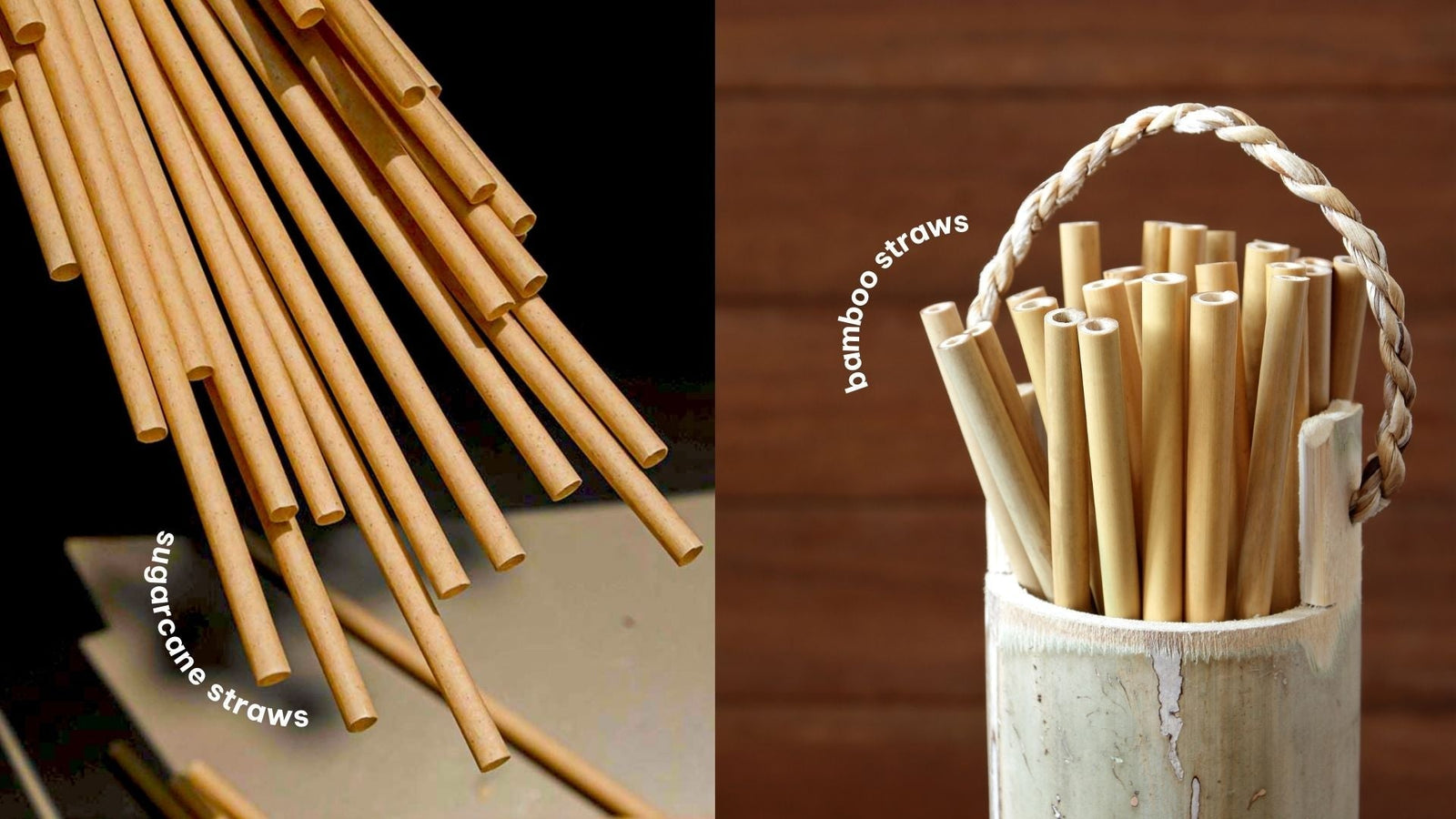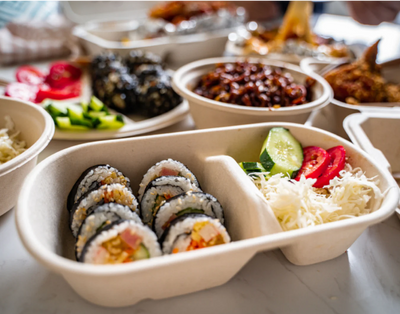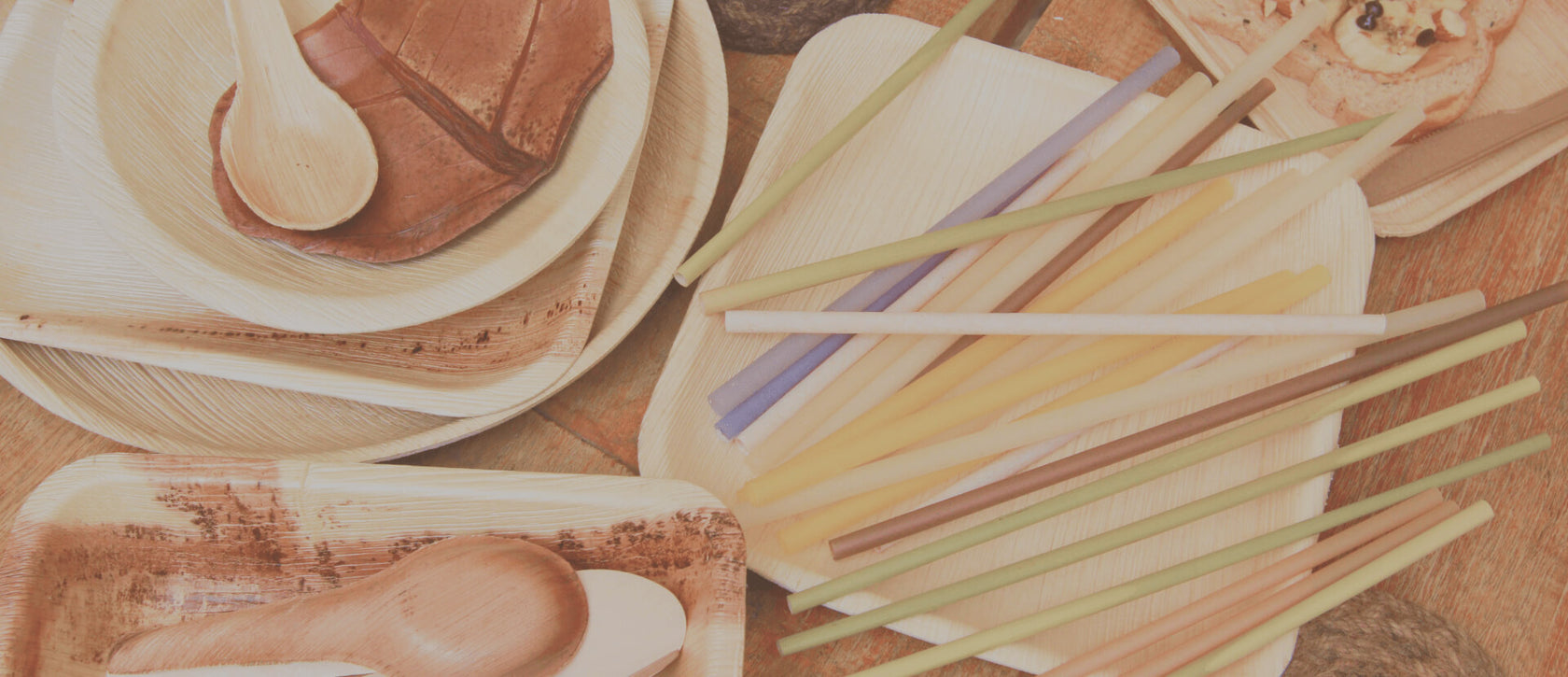We all know that plastic straws are becoming a thing of the past, and for a good reason. As more people embrace eco-friendly living, switching to sustainable alternatives like plant-based straws has never been easier or more stylish. But with so many options available, how do you know which one to choose? Sugarcane and bamboo straws are two of the most popular plastic-free alternatives, both offering nature-powered benefits without harming the planet.
In this blog, we’ll take a closer look at sugarcane straws compared to bamboo straws, highlighting the differences in materials, usability, environmental impact, pros and cons, and more. Whether you’re a small café owner searching for sustainable supplies or someone simply trying to make smarter choices at home, this guide will help you decide which straw fits your needs and lifestyle best. Let’s get started.
What Are Sugarcane Straws?
Sugarcane straws are made from bagasse, which is the dry, fibrous pulp left behind after extracting juice from sugarcane. Instead of throwing this byproduct away, it is transformed into something useful and sustainable, such as straws and food containers.
EQUO’s sugarcane straws are 100% plastic-free, compostable, and made without harmful chemicals or coatings. They are designed to break down naturally in less than a year, making them a great choice for eco-conscious businesses and individuals.
What Are Bamboo Straws?
Bamboo straws are crafted from the hollow stems of bamboo plants, which are a fast-growing, renewable grass. Each straw is typically hand-cut, cleaned, and polished. Because bamboo grows quickly and does not require much water or pesticides, it is often considered one of the most sustainable raw materials on the planet.
You will often find bamboo straws used as reusable options, ideal for people who enjoy natural aesthetics and like reusing their utensils. They are sturdy, long-lasting, and can add an organic touch to your favorite beverages.
Material Differences: Sugarcane vs. Bamboo
|
Feature |
Sugarcane Straws |
Bamboo Straws |
|
Source |
Bagasse (sugarcane pulp) |
Hollow bamboo stalks |
|
Texture and Feel |
Smooth, paper-like texture but sturdier |
Natural wood-like texture |
|
Single-use or Reusable |
Single-use |
Mostly reusable (can be cleaned and reused) |
|
Appearance |
Light tan or white, uniform design |
Varies in color and thickness, rustic look |
|
Processing |
Molded and shaped using minimal additives |
Handcrafted, cut, and polished from stalks |
Both straws are made from renewable resources, but they offer different benefits in terms of appearance, feel, and usage.
Usability: Which One Fits Your Lifestyle?
If you are often on the go, sugarcane straws might be a better option. They are ready-to-use, disposable, and still environmentally friendly. They are also heat-resistant and do not get soggy, unlike traditional paper straws.
Bamboo straws, on the other hand, are better suited for those who enjoy eco-chic home setups or prefer bringing their own straws to cafes. They require a bit more care, including regular cleaning and drying, but they are built to last and can be reused many times.
EQUO Tip: If you run a restaurant or café, sugarcane straws offer a hygienic and stylish option for single-use service. If you are creating sustainable gift sets or eco-friendly kits, bamboo straws make a thoughtful addition.
Environmental Impact
Both sugarcane and bamboo straws are much better for the planet than plastic ones, but their environmental footprints vary slightly.
Sugarcane Straws
-
Made from agricultural waste (bagasse), helping reduce landfill waste
-
Fully compostable in both home and industrial composting environments
-
Break down within six to twelve months
-
Leave no toxic residue or microplastics
Bamboo Straws
-
Made from a naturally renewable resource
-
Reusable for several months with proper care
-
Biodegradable, but may take longer to break down if not composted properly
- May involve higher carbon emissions due to shipping from bamboo-growing countries
Hygiene and Safety
Sugarcane straws are intended for single use, which eliminates concerns about germs or cross-contamination. They do not require cleaning and are safe for all ages, including children.
Bamboo straws, while reusable, need regular cleaning and proper drying. If not cared for properly, they can develop mold or unwanted odors over time. Some bamboo straws may also have natural splinters or rough edges if not finished properly, so the quality of the product is important.
EQUO’s sugarcane straws are food-safe, chemical-free, and certified compostable, making them a reliable and safe option.
Aesthetic and Brand Appeal
Bamboo straws have a unique, rustic charm and are visually appealing. They are ideal for eco-conscious cafes or bars that want to make a strong sustainability statement. They look especially nice in smoothies, cocktails, or tropical drinks.
Sugarcane straws, by contrast, offer a minimalist and modern look. Their smooth surface and neutral tones make them a versatile choice that fits seamlessly into any setup, whether in a fast-paced coffee shop or a sustainable wedding.
EQUO’s packaging and branding options help you clearly communicate your environmental values, regardless of the straw type you choose.
Price and Availability
Bamboo straws are typically more expensive upfront due to the handcrafted process and longer lifespan. They are often sold individually or in small gift sets, making them more suitable for personal or boutique use.
Sugarcane straws are affordable and available in bulk, which makes them a great option for restaurants, events, or businesses that require large quantities. They are available in various sizes, including wide options for smoothies or bubble tea.
EQUO offers competitive pricing for both small and large orders, making it easy to choose sustainability without overspending.
Pros and Cons Summary
Sugarcane Straws – Pros
-
Fully compostable and biodegradable
-
Smooth texture, easy to use
-
Affordable for businesses and large events
-
Heat-resistant and durable in most drinks
- Plastic-free and chemical-free
Sugarcane Straws – Cons
-
Designed for single use only
- May soften after extended use in liquids (two hours or more)
Bamboo Straws – Pros
-
Reusable and durable
-
Naturally antibacterial
-
Aesthetic and rustic appearance
- Great for at-home or personal use
Bamboo Straws – Cons
-
Require cleaning and maintenance
-
Higher initial cost
-
Variability in size and shape
- Not ideal for large-scale or high-turnover foodservice
So, Which One Should You Choose?
If you are looking for a convenient, disposable solution that is compostable, stylish, and practical, sugarcane straws are an excellent choice. They are ideal for cafés, restaurants, events, and individuals who want to avoid plastic without compromising convenience.
However, if you prefer reusable options and enjoy a more natural, handcrafted look, bamboo straws might be the right fit. They are perfect for home use, travel kits, and sustainable gift bundles.
No matter which one you choose, you are already making a difference by saying no to plastic straws. And if you are still not sure which one suits you best, why not try both? EQUO makes it easy to explore and enjoy sustainable options, one sip at a time.


